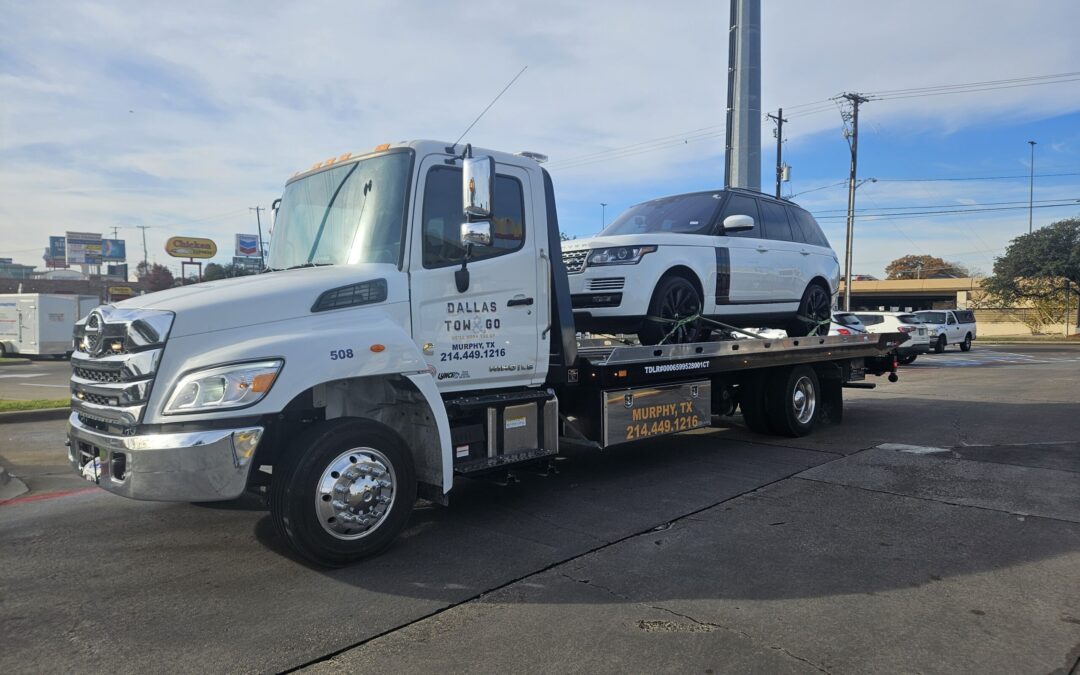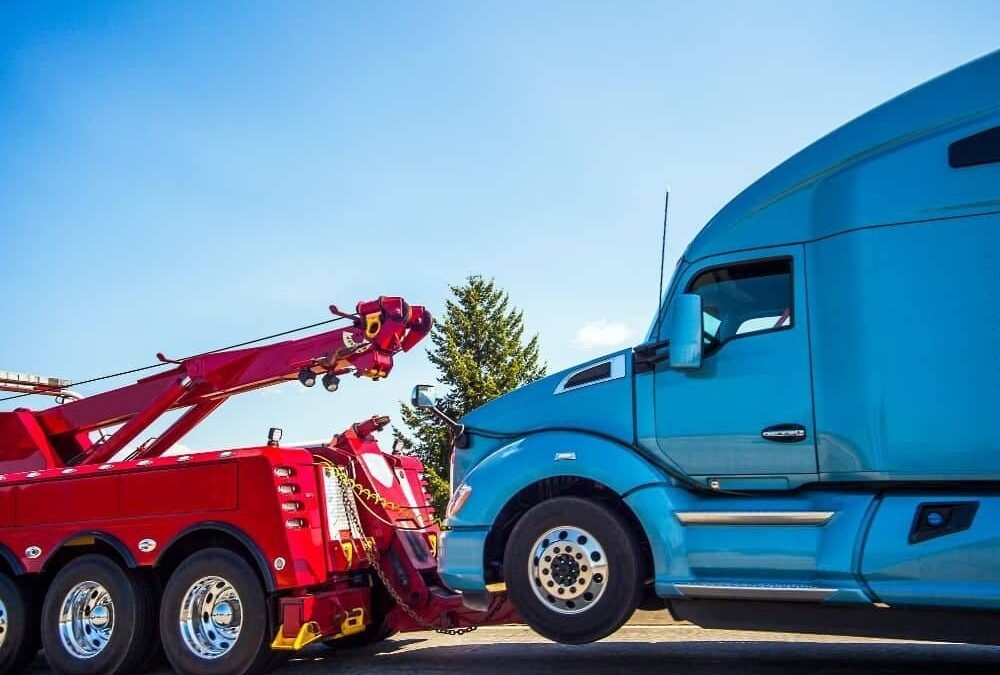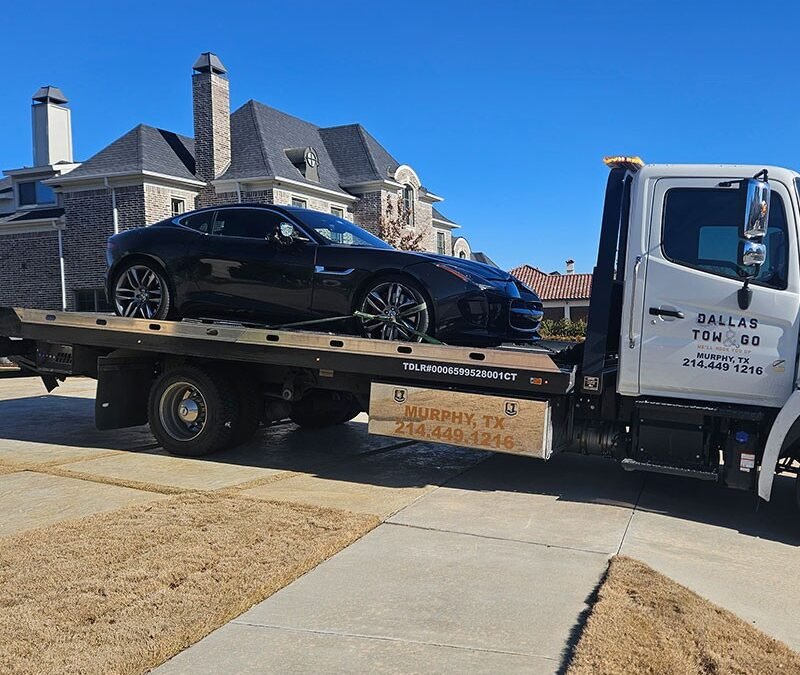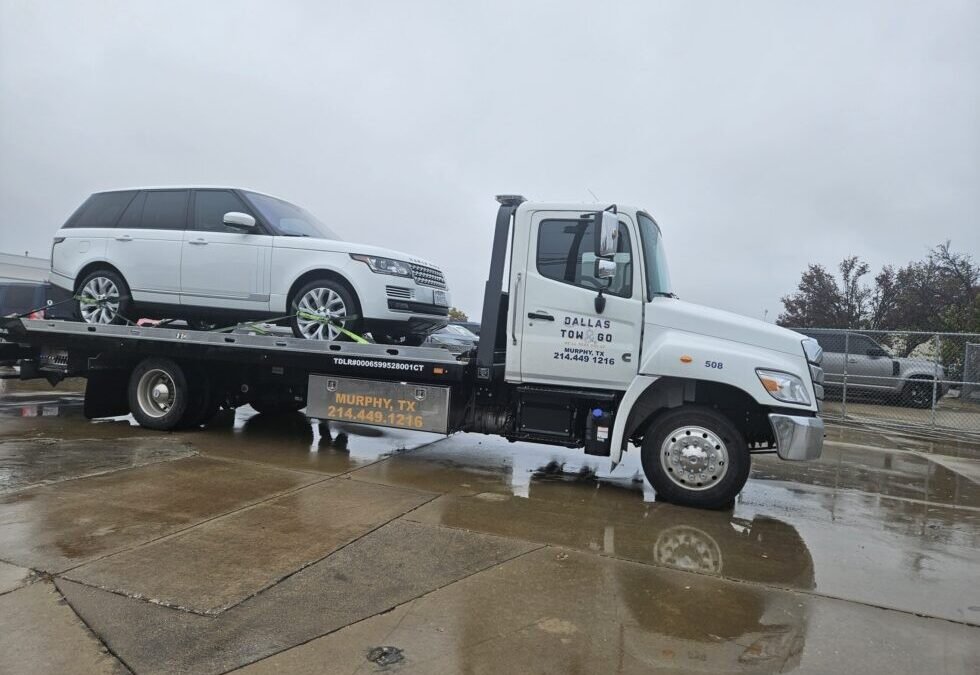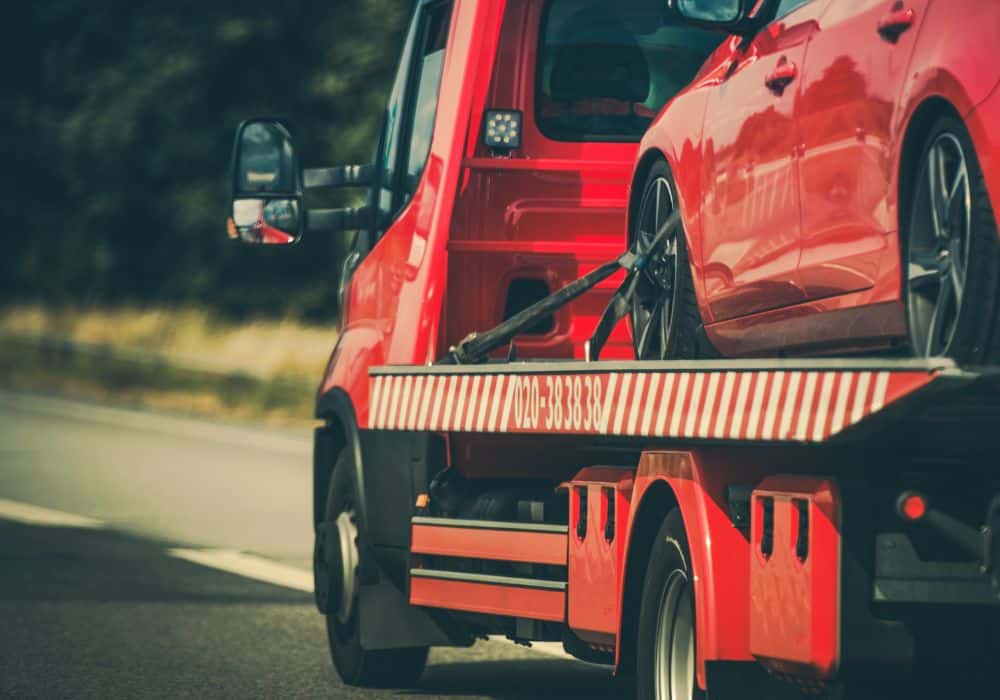 There’s a lot to consider when you travel with flat tow vehicles, especially as regulations and technology evolve in 2025. If you’re towing a car behind your RV or other vehicle, knowing the best practices can make your trips safer and less stressful. At Dallas Tow & Go, we’re committed to your safety. In this guide, you’ll find practical tips on handling tow vehicles, maintaining your setup, and navigating road challenges. By following these tips, you can feel more confident about driving with flat tow campers or cars and ensure your journey goes smoothly every time.
There’s a lot to consider when you travel with flat tow vehicles, especially as regulations and technology evolve in 2025. If you’re towing a car behind your RV or other vehicle, knowing the best practices can make your trips safer and less stressful. At Dallas Tow & Go, we’re committed to your safety. In this guide, you’ll find practical tips on handling tow vehicles, maintaining your setup, and navigating road challenges. By following these tips, you can feel more confident about driving with flat tow campers or cars and ensure your journey goes smoothly every time.
The Evolution of Flat Towing: Safety Innovations for 2025
Flat tow vehicles have experienced significant advancements, combining engineering ingenuity with technological breakthroughs to enhance safety on the road. Manufacturers now equip many tow vehicles with advanced stability controls, automatic braking systems, and integrated towing sensors, making flat towing safer and more manageable under various conditions. These innovations help you maintain control even during sudden maneuvers or braking, reducing risks associated with traditional towing methods.
Technological Advancements in Tow Vehicle Design
Modern tow vehicles increasingly feature built-in tow mode settings that adjust transmission behaviors, prevent unintended gear shifts, and optimize brake responses specifically for flat towing. Sensors monitor sway patterns in real time, alerting you to adjust your driving or automatically activate corrective measures. Lightweight materials, combined with reinforced frames, enhance durability without sacrificing fuel efficiency, allowing you to tow effectively while preserving vehicle integrity and stability.
Regulatory Changes Affecting Towing Safety Standards
Federal and state regulations have tightened, introducing new safety standards for flat tow vehicles effective in 2025. Requirements now encompass mandatory electronic stability control systems and stringent inspection protocols focusing on tow hitch strength and brake functionality. Compliance ensures your tow vehicle’s design aligns with the latest safety benchmarks, minimizing potential hazards during towing.
These regulatory updates respond to data showing accidents linked to improper towing equipment or insufficient vehicle capabilities. As a result, manufacturers and owners must adapt by equipping tow vehicles with certified towing accessories, following stricter pre-trip inspections, and ensuring configurations meet state-specific codes. By adhering to evolving regulations, you enhance overall road safety while avoiding penalties or liabilities associated with outdated towing practices.
Essential Pre-Tow Preparations to Enhance Safety
Before hooking up your flat tow vehicles, confirm that all connections and systems are thoroughly checked. Evaluate brakes, lights, and hitch components, ensuring they meet manufacturer specifications. Proper pre-tow inspections reduce the risk of mechanical failure on the road, improving control and visibility for you and others. These steps aren’t just boxes to tick—they directly impact your towing safety and help prevent costly, dangerous mishaps during your journey.
Conducting Comprehensive Vehicle Inspections
Begin with an in-depth assessment of both your tow vehicle and the one being towed. Check tire pressures, tread depth, and for any signs of leaks or damage. Test all lighting—brake lights, turn signals, and hazard lights—to maintain full communication with other drivers. A thorough inspection includes verifying that the parking brake is disengaged on the flat towed vehicle to prevent dragging. These precautions guarantee your vehicles operate optimally during transit, minimizing unexpected breakdow
Ensuring Proper Weight Distribution and Load Limits
Calculate the combined weight of your flat tow vehicles, making sure it doesn’t exceed the tow vehicle’s maximum towing capacity or the hitch’s weight limits. Use a tongue weight scale to measure the hitch load—ideally, keeping it around 10-15% of the total trailer weight for balanced handling. Overloading or uneven distribution can induce sway or strain suspension components, jeopardizing control. Properly balanced loads ensure smoother turns and braking, safeguarding you and other drivers on the road.
Beyond measuring the total weight, consider how cargo is loaded within the towed vehicle if applicable. Placing heavier items low and centered improves stability. Also, account for any additional equipment or modifications on your tow vehicle that add to its weight. Using weight-distribution hitches or sway control devices can further optimize handling by spreading the load across all axles. These strategies, when combined, make towing more predictable and reduce wear on your vehicle.
Choosing the Right Tow Vehicle: Factors to Consider
Selecting the ideal flat tow vehicle involves balancing various elements that directly influence towing safety and efficiency. Consider the engine strength, braking systems, and drivetrain layouts that are tailored to your specific towing needs. You should also evaluate vehicle weight, fuel economy, and onboard technology for monitoring trailer performance. Towing-specific features like integrated brake controllers and enhanced cooling systems often make a significant difference. After weighing these factors carefully, you’ll be better equipped to pick a tow vehicle that maximizes safety while complementing your style of travel and tow load.
Assessing Vehicle Compatibility and Performance
Your flat tow vehicle must harmonize well with the trailer you plan to tow. Drivetrain configurations, such as four-wheel or all-wheel-drive systems, play a vital role in compatibility, enabling better control and stability. Engine horsepower and torque have a direct impact on acceleration and hill climbing when towing heavy loads. Checking for manufacturer-approved towing packages also adds assurance — some models come pre-equipped for flat towing with necessary modifications. Reviewing user experiences and technical specifications helps you determine if your vehicle will maintain optimal performance without undue stress on the road.
Evaluating Tow Capacity and Equipment Requirements
Matching your tow vehicle’s capacity with the trailer’s weight is essential to avoid mechanical strain and hazards. Tow ratings usually encompass the maximum allowable weight the vehicle can safely handle, including the trailer and cargo combined. Consider the load capacity of hitch assemblies, wiring harnesses for brake controllers, safety chains, and supplemental cooling aids like transmission coolers. After verifying these parameters against the trailer’s specifications, you ensure your setup satisfies both legal regulations and practical safety standards on various terrains and driving conditions.
Delving deeper into tow capacity requires more than just glancing at the gross trailer weight rating (GTWR). You must factor in the tongue weight—the downward force the trailer exerts on the hitch—which ideally should be about 10-15% of the trailer’s total weight for stability. Also, inspecting the type of hitch—whether weight-distributing or standard ball mount—can affect towing dynamics. Equipping your vehicle with the appropriate sway control devices minimizes trailer fishtailing, enhancing safety during sudden maneuvers or adverse weather. Confirm that all electrical connections support brake synchronization and lighting, as these features reduce reaction times and accidents while flat towing.
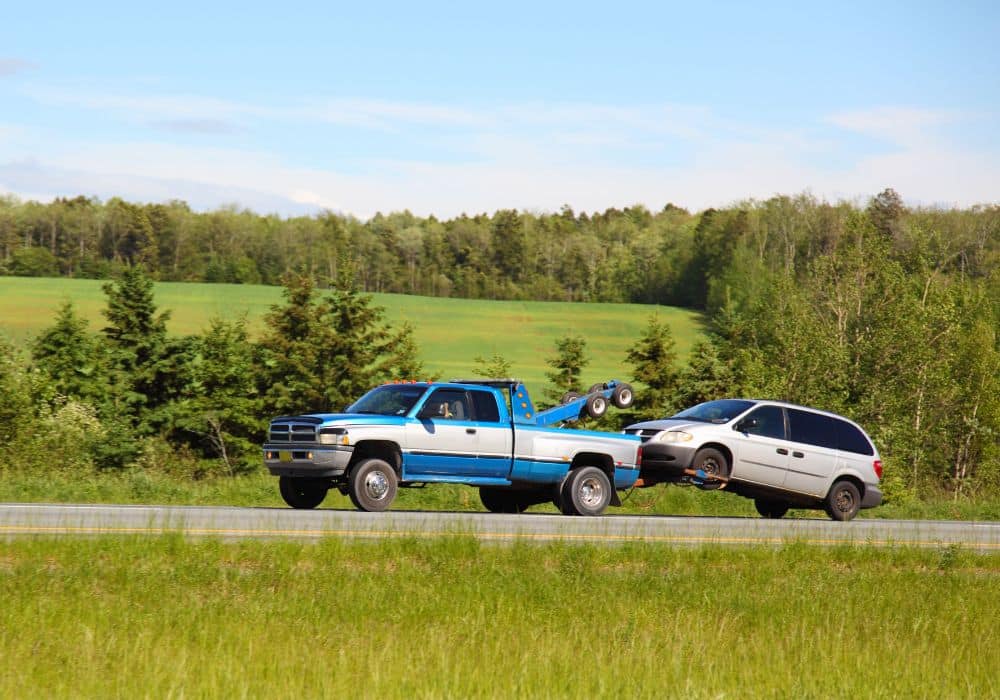
Best Practices for Safe Flat Towing Procedures
Mastering the flat towing process means paying close attention to every step, from hitching up to braking smoothly. Confirm that your tow vehicles align properly and that the connection is secure before hitting the road. Keeping your speed moderate and maintaining a wider following distance helps accommodate the altered handling and braking response of flat tow vehicles. Regularly check all lights on both vehicles for proper operation to meet legal requirements and increase visibility. These practices help you avoid unexpected situations and maintain control throughout your journey.
Implementing Effective Communication Signals
Using synchronized hand or electronic signals between the driver and any spotter can greatly enhance maneuvering, especially in tight spaces. For instance, establishing clear signals for commands like stop, slow down, or turn ensures quick responses without confusion. Your spotter can use LED wands or radios to convey instructions, which is especially helpful in low visibility conditions. Consistent communication minimizes the risk of mistakes when hitching or during unexpected stops, making your flat tow experience smoother and safer.
Utilizing Safety Chains and Backup Systems
Properly installed safety chains form a secondary link between your flat tow vehicle and the towing vehicle, preventing separation if the primary hitch fails. Chains should cross under the hitch to create a cradle effect, keeping the towed vehicle aligned behind you. Backup systems, such as electronic braking controls, provide additional stopping power, synchronizing the brake response of both cars for safer deceleration on downhill slopes or sudden stops. These features add layers of protection and peace of mind while towing.
Diving deeper into safety chains, they should be rated to handle at least 1.5 times the combined weight of your flat tow vehicle and its load. Inspect chains regularly for wear, rust, or damage, replacing any compromised links immediately. Pairing these chains with a breakaway switch that automatically applies the trailer’s brakes if the chains are disconnected further ensures control. Backup braking systems, such as proportional controllers, adjust their output based on the brake pressure of your towing vehicle, resulting in smoother stops and enhanced stability. Together, these safety elements form a robust defense against potential towing accidents.
Navigating Hazardous Conditions: Tips for Flat Towing
Operating flat tow vehicles demands extra attention and adaptability, especially under challenging road and weather conditions. Adjust your speed to increase safety margin during sudden stops or turns. Be vigilant about braking distance as the extra length can increase stopping time by up to 25%. Regularly check connections and lights for clear visibility. Flat towing requires you to anticipate hazards ahead with precision and react smoothly to maintain control. Thou shall prioritize smooth, steady maneuvers to minimize the risk of swaying or jackknifing on tricky terrain or slick roads.
Handling Adverse Weather and Road Conditions
In rain, snow, or fog, your flat-tow setup requires more deliberate handling. Wet roads can increase stopping distances by nearly 50%, so you must increase the following distance and reduce speed. Snow and ice require slow acceleration and gentle braking to prevent sliding. Fog limits visibility, making extra caution with turn signals and headlights imperative. Tire traction during these conditions directly influences stability, so ensure your tow vehicle’s tires are in top shape before heading out.
Recognizing Common Road Hazards and Preventative Measures
Potholes, uneven pavement, and debris can cause sudden jolts to your flat tow vehicle, risking damage to towing connections or unplanned sway. Keep an eye out for cracks or ruts, especially on rural or less maintained roads. Bridges and ramps require smooth entry and exit to avoid sudden jerks. Slow-moving traffic or unexpected stops require a greater buffer zone. You should practice proactive scanning to spot hazards early and adjust as needed to preserve control.
Identifying hazards such as sharp curves, construction zones, and wildlife crossings can significantly reduce accident risk when flat towing. Using GPS apps with hazard alerts or subscribing to traffic updates helps you reroute or prepare in advance. In urban areas, be cautious of cyclists and parked vehicles that may open their doors unexpectedly. Preventative steps include reducing speed before curves and allowing extra time for braking on downhill grades. Equipping your tow vehicle with sway control devices adds a layer of safety when navigating these common challenges.
Training and Resources for Towing Safety Awareness
Sharpening your skills with flat tow vehicles enhances overall road safety and confidence when towing. Practical training sessions and access to targeted resources help you understand key dynamics, such as weight distribution, braking adjustments, and proper hitch setups. Gaining hands-on experience through certified driving schools or workshops tailored for tow vehicles ensures that you can effectively handle various road conditions. This proactive approach not only reduces accident risks but also equips you with strategies to navigate unexpected towing challenges.
Educational Programs for Towing Best Practices
Several organizations offer specialized courses focusing on tow vehicle safety and flat towing techniques. You can enroll in programs, both online and in-person, designed to teach you about load calculations, turning dynamics, and vehicle compatibility. For example, the Specialty Equipment Market Association (SEMA) provides practical workshops that cover real-world towing scenarios and emerging safety technologies. Completing these courses improves your towing proficiency and helps you stay compliant with evolving regulations and industry standards.
Recommended Online Resources and Communities
Accessing expert advice and sharing experiences in enthusiast forums and educational websites keeps your flat tow vehicle knowledge current. Resources like the RV Towing Podcast and forums such as TowingHQ offer detailed guides, user reviews, and troubleshooting tips. Social media groups focused on tow vehicles provide a platform for asking questions and gaining insights from seasoned owners and professionals. Staying active in these communities builds a support network that enhances your towing safety awareness.
Delving deeper into recommended online resources, websites like Towing.com deliver comprehensive articles and videos on towing methods, vehicle maintenance, and legal requirements. Forums on RV.net and iRV2 connect you with thousands of tow vehicle users who discuss experiences, share flat towing tips, and recommend equipment upgrades. The interactive aspect of these platforms allows you to receive personalized advice that aligns with your specific flat tow vehicle model and towing needs, ensuring you’re well-prepared for any trip.
Final Thoughts
Drawing together the key points on flat tow vehicles, you now have practical tips to enhance your safety when using these towing methods. By choosing the right flatbed options and following proper hookup techniques, you can make your journeys smoother and safer. Paying attention to vehicle weight limits and regularly inspecting your tow vehicles helps prevent unexpected issues on the road. At Dallas Tow & Go, we understand the importance of these details. Applying these simple strategies ensures that your experience with flat tow vehicles in 2025 will be more secure, reducing risks and keeping you in control every mile you travel.
FAQ
Q: What are some important safety tips for driving flat tow vehicles in 2025?
A: To boost road safety when using flat tow vehicles, it’s important to regularly check the tow setup, including tow bars and safety chains. Ensure that the brakes and lights on both the tow vehicle and the flat-towed vehicle are functioning correctly. Drive at moderate speeds, avoid sudden maneuvers, and keep a safe distance from other cars. Following these steps helps maintain control and reduces the risk of accidents.
Q: How can I make sure my tow vehicles are properly connected before hitting the road?
A: Before driving, inspect all connection points, such as tow bars, hitch pins, and safety cables, for any signs of wear or looseness. Ensure that the flat tow vehicle is securely attached and that electrical connections for brake lights and turn signals are functioning. Proper connection helps prevent detachment and increases overall safety during travel.
Q: Are there specific maintenance routines I should follow for flat towing setups?
A: Yes, maintaining your tow vehicles includes checking tire pressures and tread, inspecting brakes on both the primary and flat tow vehicles, and verifying that all towing equipment is in good condition. Lubricating moving parts and keeping the tow equipment clean will also help prevent mechanical issues while driving.
Q: What driving habits improve safety when towing flat tow vehicles on highways?
A: Safe driving with flat towed vehicles involves keeping moderate and consistent speeds, avoiding hard braking or quick lane changes, and being extra cautious in windy or wet conditions. Giving yourself more time to stop and increasing following distance helps manage longer braking distances, making the road safer for you and others.
Q: Can using proper lighting and signals on tow vehicles enhance road safety? How?
A: Absolutely. Ensuring that brake lights, turn signals, and running lights on both the tow vehicle and the flat towed vehicle work correctly is important for clear communication with other drivers. Proper lighting helps others anticipate your actions, reducing the chance of collisions and improving overall safety during towing.
Ensuring the safety of your flat tow vehicles is paramount, and Dallas Tow & Go is here to help you achieve that peace of mind. We offer a comprehensive range of towing and roadside assistance services, including flatbed towing, long-distance towing, lockout services, fuel delivery, tire changes, jump-starts, and winch-outs. Our expert team is equipped to handle everything from sedans to trucks and RVs, providing professional and efficient service throughout Dallas, TX, and surrounding areas.
For reliable support with your flat tow vehicles or any roadside emergency, don’t hesitate. Visit dallastowandgo.com or call us today to ensure your journey is safe.
9 Crucial Tow Truck Equipment Pieces for Tough Recovery Jobs
Reliable Vehicle Recovery Equipment for Off-Road Safety
Best 24/7 Flat Tire Change Service in Dallas: How We Help During Emergency


